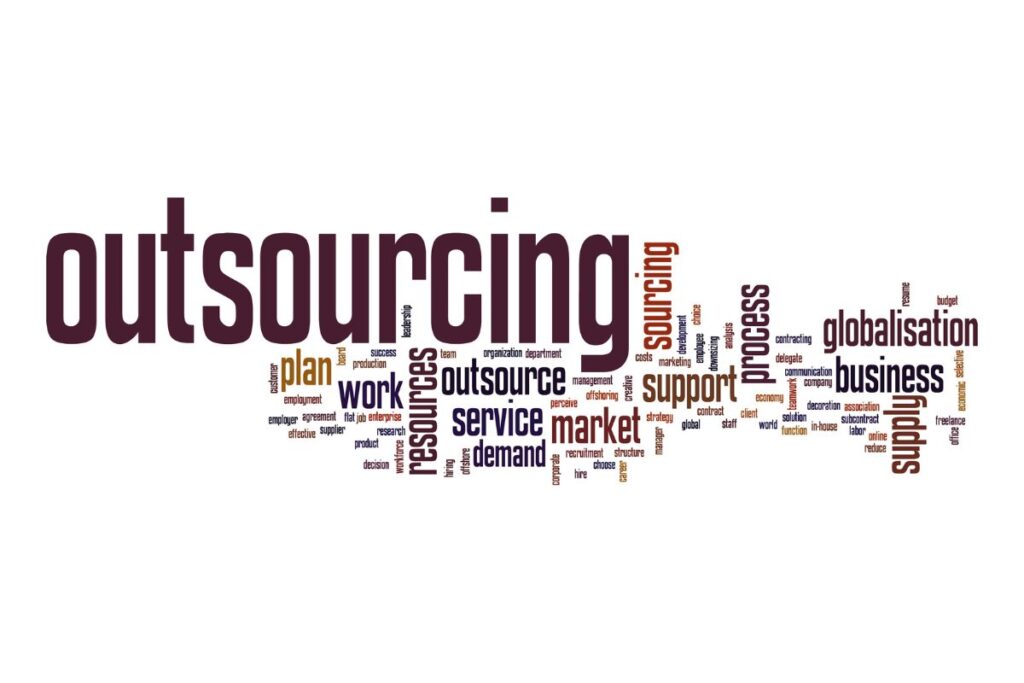You’re probably here because you need IT help but have no idea what it should cost. Maybe you got a quote that seems crazy high. Or you’re worried about getting ripped off. Fair enough. The reality is that outsourced IT services pricing is confusing on purpose sometimes. Providers throw around numbers like $99 per user but then hit you with setup fees, minimums, and add-ons. A simple question about cost turns into a maze of pricing models and contract terms. Here’s what you actually need to know. Most small businesses pay between $150-250 per user monthly for decent IT support.
But that number means nothing without context. Your actual costs depend on what you need, what’s included, and what happens when things break.
How Much Do Outsourced IT Services Cost?
Outsourced IT services typically run between $99 to $500+ per user monthly, depending on what you actually need and your business size.
Look, the truth is IT costs are all over the place. A 10-person startup might pay $1,500 monthly for basic support. Meanwhile, a 50-person company could shell out $12,000 for the same thing but with more bells and whistles. The pricing really depends on a bunch of stuff. How complex is your setup? Do you need 24/7 support or just business hours? Are we talking basic help desk or full network management?
Small businesses usually see costs like this. Basic monitoring and help desk runs about $99-150 per user. If you want someone managing your whole infrastructure, that jumps to $200-350. And if you need the works – security, compliance, strategic planning – you’re looking at $400-500+ per user.
| Business Size | Basic Support | Full Management | Enterprise Package |
|---|---|---|---|
| 1-10 users | $990–$1,500/month | $2,000–$3,500/month | $4,000–$5,000/month |
| 11-25 users | $1,100–$3,750/month | $2,200–$8,750/month | $4,400–$12,500/month |
| 26-50 users | $2,600–$7,500/month | $5,200–$17,500/month | $10,400–$25,000/month |
| 50+ users | Custom pricing | Custom pricing | Custom pricing |
The thing that really drives prices is what’s included. Basic plans cover password resets and simple troubleshooting. Premium plans handle everything from cybersecurity to cloud migrations to strategic IT planning. Your industry matters too. Healthcare and finance companies pay more because of compliance requirements. Manufacturing might need specialized support for production systems.
What Are the Costs When IT Goes Wrong?
Security breaches cost businesses an average of $4.45 million, but small businesses face different numbers – often $200,000 to $3 million in total damages.
The scary part isn’t just the big breach number. It’s all the other costs that pile up when IT fails. Downtime is a killer. Most businesses lose about $5,600 per minute when systems are down. That’s $336,000 per hour. Even a small business losing $1,000 an hour faces $8,000 for a full day outage.
But wait, there’s more costs hiding in plain sight. When your team can’t access files or emails, work slows, and productivity tanks. Studies show employees waste 22 minutes daily just dealing with IT issues. That’s 91 hours yearly per person.
| IT Failure Type | Small Business Cost | Recovery Time |
|---|---|---|
| Ransomware Attack | $150,000–$500,000 | 2–4 weeks |
| Server Crash | $40,000–$100,000 | 3–5 days |
| Data Loss (no backup) | $50,000–$250,000 | Often permanent |
| Email Outage | $5,000–$15,000/day | 1–2 days |
| Network Breach | $200,000–$3M | 6+ months |
Real examples hit hard. A dental practice in Texas got ransomware and paid $75,000 just for the ransom. Then spent another $125,000 on recovery and lost patients. Total damage: over $300,000.
Small business IT outsourcing can prevent most of these disasters. The cost of prevention is nothing compared to cleanup.

What Do Managed IT Services Cost?
Managed services run from $99-$500 per user monthly, with most small businesses paying $150-$250 per user for comprehensive coverage.
Basic managed IT services pricing starts simple. You get remote monitoring, patch management, and help desk support. That’s your $99-150 tier. Good for businesses that just need someone watching their stuff. Small businesses usually see costs like this, though what your law firm’s IT budget should ultimately guide your decision.
The middle tier is where most companies land. For $150-250 per user, you get proactive maintenance, security tools, backup management, and unlimited support. This is solid IT support for small business without breaking the bank. Comprehensive plans at $250-500+ include everything. Strategic planning, compliance help, vendor management, and even virtual CIO services. These packages handle all your outsourced IT services needs.
Co-managed services split the difference. Your internal IT keeps control but gets help with specialized stuff. Costs run 40-60% of full managed services. So if full service would cost $10,000 monthly, co-managed might be $4,000-6,000. The managed services pricing model usually works like this. You pay per user or per device monthly. Most providers require 1-3 year contracts. Some charge extra for servers or special equipment.
How Much Do Retainer IT Services Cost?
Retainer services cost $1,000-$10,000 monthly for a set number of support hours, usually cheaper than managed services but with less coverage.
Retainer-only deals give you a bucket of hours monthly. A 20-hour retainer might cost $2,000-3,000. Use it or lose it each month. Good if you have sporadic IT needs but don’t need constant monitoring. Retainer plus monitoring combines both approaches. You get basic monitoring for $500-1,000 monthly, then a retainer for actual work. Total cost lands around $2,000-4,000 monthly for small businesses.
IT services price list for retainers usually breaks down like this. Junior tech hours cost $75-100. Senior engineers run $125-175. Specialized work like security or cloud architecture hits $200+ hourly. When you compare with managed services, retainers work best for stable environments with IT help desk services handling routine issues.
When you compare with managed services, retainers work best for stable environments. If nothing breaks, you save money. But one big problem can blow through your hours fast, then you’re paying hourly rates on top.
What Do On-Demand and Break-Fix IT Services Cost?
Break-fix services charge $100-$200 hourly with no monthly commitment, making sense only for very small businesses with minimal IT needs.
IT services rates per hour vary by location and expertise. Basic desktop support runs $75-125. Network troubleshooting costs $125-175. Emergency after-hours support often doubles these rates. This model only makes sense if you barely use IT support. Maybe you call once every few months for small issues. Otherwise, the costs add up quickly.
Let me show you the math. Say you have 10 computers, and each has one problem monthly. At $150 per hour and 2 hours per fix, that’s $3,000 monthly. A managed plan would cost less and prevent most problems. Typical project costs in the break-fix world look rough. Server replacement: $5,000-15,000. Network redesign: $10,000-25,000. Email migration: $3,000-8,000. And that’s just labor, not counting downtime.
How Much Do Outsourced Cloud Services Cost?
Cloud services range from $5-$50 per user for SaaS apps to thousands monthly for full infrastructure, with lots of hidden costs.
SaaS pricing seems simple at first. Microsoft 365 costs $6-22 per user. Salesforce runs $25-300. But then you need backup services, security tools, and integration platforms. Suddenly, that $20 user is costing $75. PaaS and IaaS get complicated fast. A basic web server might cost $100 monthly. But add bandwidth, storage, backups, and monitoring – now it’s $500. Scale up for real production use and you’re at $2,000+.
Hidden outsourced IT support costs in cloud services kill budgets. Data transfer fees, storage overages, API calls, support charges. One client found their $5,000 monthly AWS bill was actually $12,000 after all the extras. Security for cloud isn’t free either. Cloud access security brokers run $5-15 per user. Data loss prevention adds another $8-12. Multi-factor authentication costs $3-6. These IT outsourcing costs stack up.
What Do IT Staff Augmentation Services Cost?
Staff augmentation runs $50-$200 hourly for skilled IT professionals working as part of your team, often cheaper than hiring full-time.
Basic help desk augmentation costs $50-75 hourly or about $8,000-12,000 monthly full-time. Network admins run $75-125 hourly. Specialized roles like cloud architects or security engineers hit $150-200+. This model beats outsourced IT for small businesses when you need specific skills temporarily. Maybe you’re doing a migration or need extra hands for a project. Way cheaper than hiring someone permanent.
Compared to co-managed services, augmentation gives you more control but less structure. You manage the person directly. They work on your schedule. But you handle training, tools, and oversight. Skill level really impacts cost. Junior developers from staff aug firms cost $40,000-60,000 yearly. Senior engineers run $80,000-120,000. Architects and specialists can hit $150,000-200,000.
How Much Do Project-Based and Offshore IT Services Cost?
Project work ranges from $5,000 for simple tasks to $500,000+ for major initiatives, while offshore development costs 30-70% less but comes with challenges.
IT services outsourcing for projects usually uses fixed pricing. Email migration: $5,000-15,000. ERP implementation: $50,000-250,000. Custom software: $25,000-500,000. Depends on complexity and timeline. Offshore development looks cheap on paper. Indian developers cost $25-50 hourly versus $100-200 for US developers. But factor in communication issues, time zones, and quality concerns – savings shrink fast.
Quality versus cost is the eternal struggle with outsourcing IT services. That $10,000 offshore project might need $5,000 in fixes. The $25,000 local option could be done right the first time. Not always, but often enough to matter. Real project examples show the spread. A 20-person company paid $8,000 for an Office 365 migration locally. A similar company paid $3,000 offshore but spent 3 months fixing issues. Another paid $12,000 for white-glove service with zero downtime.

What’s the Total Cost of Ownership for Outsourced IT?
Total cost of ownership for outsourced IT includes service fees, transition costs, and opportunity costs – usually 20-40% above quoted prices.
Direct costs are just the start. You’ve got monthly service fees, sure. But also setup fees, licensing, hardware refresh, and compliance audits. A $5,000 monthly service might really cost $6,500 all-in. Indirect costs hide everywhere. Staff time managing vendors. Productivity loss during transitions. Integration between multiple providers. These easily add 15-25% to your total spend.
Opportunity costs matter too, though they’re hard to measure. What could your team do if they weren’t fighting IT fires? How much revenue do you lose from slow systems? This stuff adds up to serious money.
| Outsourcing Model | Direct Costs | Hidden Costs | 3-Year TCO (20 users) |
|---|---|---|---|
| Managed Services | $150/user/month | 20% overhead | $129,600 |
| Break-Fix | $2,000/month avg | Downtime losses | $144,000+ |
| Co-Managed | $100/user/month | Internal staff time | $108,000 |
| Staff Augmentation | $8,000/month | Management overhead | $345,600 |
The comparison framework shows managed services usually win on TCO despite higher monthly costs. They prevent problems, reduce downtime, and free up your team. Managed IT services pricing might seem high but the value is there.
What Hidden Costs Should You Watch For?
Hidden fees can add 20-50% to your IT service costs if you’re not careful about contract details.
Setup fees hit you upfront. Many providers charge $1,000-5,000 just to onboard you. They’ll audit your systems, install their tools, and document everything. Some waive this with longer contracts. Migration costs surprise people constantly. Moving email to a new provider: $100-500 per mailbox. Transferring files: $50-200 per user. Network reconfiguration: $5,000-15,000. Nobody mentions this in sales calls.
Additional user charges catch growing businesses. Your contract covers 20 users but you hired 5 more? That’ll be premium pricing for those extras, often 150% of your per-user rate.
Security add-ons nickel and dime you:
- Advanced threat protection: $8-15/user
- Email encryption: $5-10/user
- Security awareness training: $3-8/user
- Compliance reporting: $10-25/user
- Incident response retainer: $1,000-5,000/month
Compliance costs for IT outsourcing for small businesses in regulated industries get expensive. HIPAA compliance support adds $500-2,000 monthly. PCI compliance runs $300-1,000. SOC 2 preparation costs $10,000-50,000.
Contract termination fees are the worst surprise. Many providers require 30-90 days’ notice and charge fees for early termination. Some charge for data extraction orfor removing their tools. Budget $5,000-15,000 to switch providers.
People Also Ask
What’s the average cost of a data breach for small businesses?
Small businesses face $150,000 to $3 million in breach costs, typically. The average sits around $200,000, but 60% of small businesses close within 6 months of a major breach. Costs include forensics, legal fees, notification, credit monitoring, lost business, and reputation damage.
How much does IT downtime cost per hour?
The average cost of IT support for small businesses runs $5,000-10,000 hourly. But it varies wildly. A small retailer might lose $1,000 hourly while an e-commerce site loses $50,000. Calculate your revenue per hour, add productivity losses, and multiply by the affected staff.
What’s cheaper: managed IT services or break-fix support?
Managed services pricing beats break-fix for most businesses with over 5 employees. Break-fix seems cheaper at first, but one server crash costing $20,000 wipes out years of savings. Managed services prevent problems, so while you pay $2,000 monthly, you avoid $50,000 disasters.
How much do SaaS services typically cost per user?
Basic SaaS apps run $5-30 per user monthly. Professional tools cost $30-100. Enterprise software hits $100-500+. But remember, you’ll need multiple apps. Email, CRM, project management, and accounting – suddenly each user costs $200-400 monthly total.
What are the hidden costs in cloud service contracts?
Watch for data egress fees, API charges, support costs, and overages. Managed IT service pricing for cloud often excludes these extras. Bandwidth overages can triple your bill. Premium support adds 20-30%. Backup and disaster recovery double storage costs. Always budget 40% above quoted prices for cloud services.


